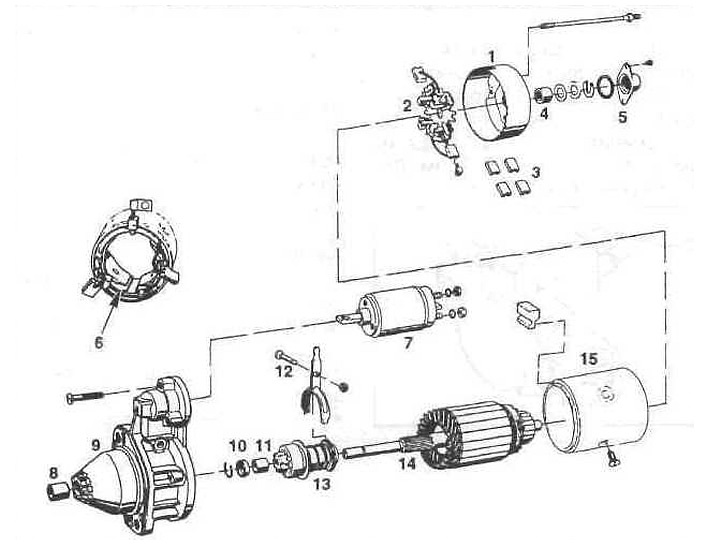
Bosch starter elements
1 - collector body;
2 - brush holder;
3 - a set of carbon brushes;
4 - ceramic-metal bushing;
5 - cap;
6 - excitation winding;
7 - traction relay;
8 - ceramic-metal bushing;
9 - drive housing;
10 - thrust ring;
11 - ceramic-metal bushing;
12 - drive fork;
13 - gear;
14 - anchor;
15 - body of poles.
To start an internal combustion engine, a small electric motor is needed - a starter. In order for the engine to start, the starter must spin it up to at least 300 rpm. This only happens when the starter is working properly and the battery is sufficiently charged.
The starter consists of a drive housing, a pole housing and a collector housing. An armature and a collector, as well as a brush holder are located in the body of the poles and the collector. The brush holder contains carbon brushes, which wear out rather slowly but constantly. With severe wear on the brushes, the starter will not be able to work well.
The drive gear is located in the front drive housing. When the ignition switch voltage is applied to the starter, with the help of a traction relay, which is located on the starter housing, the drive gear moves along the grooves of the axis and is pressed against the ring gear of the engine flywheel. As soon as the gear reaches the stop along the axis, it is rigidly connected to the flywheel. The starter can now crank the engine at the correct RPM. When the engine starts, the gear is accelerated by the engine, i.e. it moves faster than the starter for a short time and disengages, breaking the connection between the starter and the engine.
Since a large current is required for starting, the quality of the wire connections should be checked as part of the maintenance. Clean corroded joints and lubricate with protective grease.
Attention: For replacement, you can use not only a new, but also a starter restored in a workshop.
